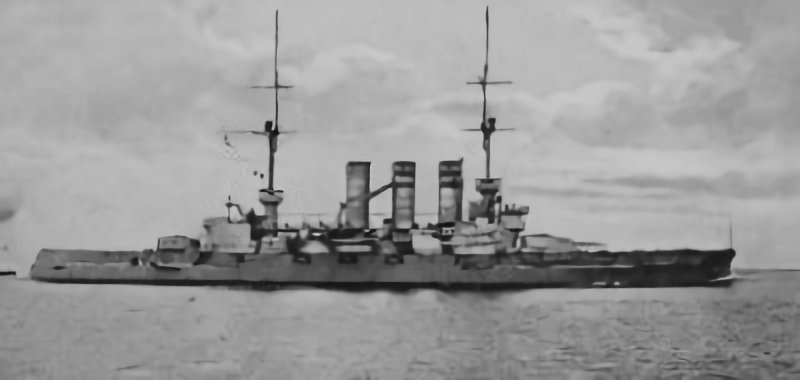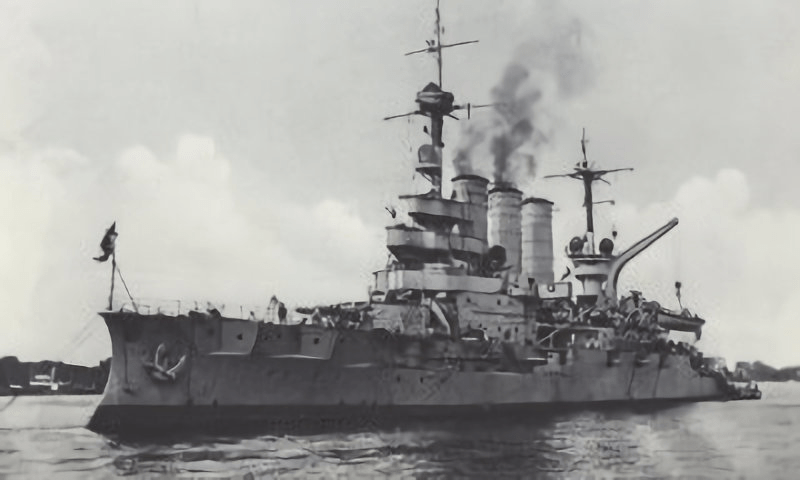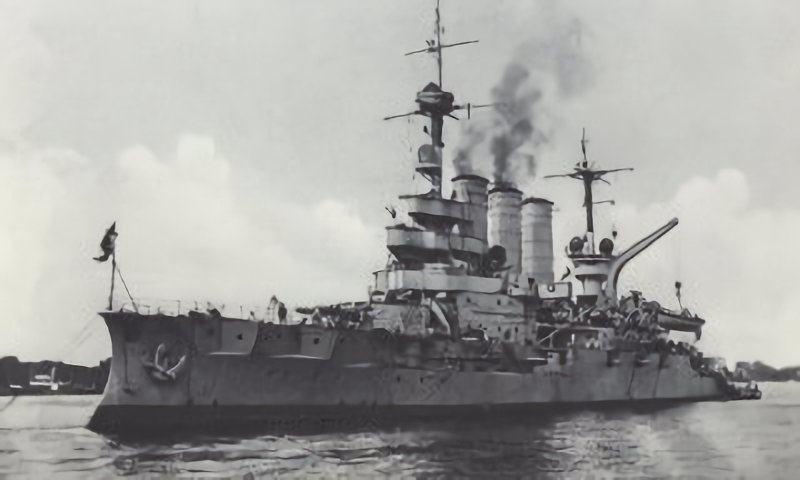German Pre-Dreadnought Battleship SMS Elsass
SMS Elsass was the second unit of the Braunschweig-class battleships (along with her sister ships Braunschweig, Lothringen, Hessen and Preussen) built for the Imperial German Navy. Named after the province of Alsace (Elsass in German), she was laid down at the Kaiserliche Werft shipyard in Wilhelmshaven in 1901, launched on 26 May 1903, and commissioned into service on 29 October 1904.
Like her sisters, she embodied the peak of German pre-dreadnought design before being rendered obsolete almost immediately by the British HMS Dreadnought in 1906.
Design and Capabilities
Elsass shared the same layout and characteristics as the other ships of her class, combining a heavy battery of 28 cm guns with a large secondary armament of 17 cm guns.
Pre-War Service
Elsass joined the High Seas Fleet shortly after commissioning and took part in annual training cruises, fleet manoeuvres, and goodwill visits abroad. For several years she was considered a first-line capital ship, but the dreadnought revolution quickly reduced her combat value.
First World War Service
At the outbreak of the First World War in 1914, Elsass, like her sisters, was mobilised with the fleet. Initially she took part in coastal defence and patrols in the North Sea.
Her most notable wartime action came in August 1915 during the Battle of the Gulf of Riga, part of Germany’s attempt to clear the Baltic Sea for operations against Russia. Elsass, together with other units of the German fleet, was sent to force entry into the Gulf, which was defended by minefields and the Russian pre-dreadnought Slava.
On 16 August 1915, Elsass engaged Slava in an artillery duel. The two pre-dreadnoughts exchanged fire at long range; although neither side suffered decisive damage, Slava was hit several times and forced to withdraw to avoid destruction. The German attempt to fully penetrate the Gulf ultimately failed due to mines and submarine threats, but the action highlighted that the Braunschweig-class still had some fighting value in the Baltic against opponents of similar generation.
After the Gulf of Riga operation, Elsass was increasingly relegated to secondary duties. By 1916, after the Battle of Jutland, the High Seas Fleet’s older pre-dreadnoughts were judged too vulnerable for major operations, and Elsass spent the remainder of the war in training and guardship roles.
Post-War Service and Fate
Under the Treaty of Versailles, Germany was allowed to keep eight old battleships for coastal defence; Elsass was among those retained. She served with the Reichsmarine through the 1920, receiving major overhaul in 1923.
By the early 1930s, she had been made obsolete by newer warships. Stricken from the naval register in 1936, she was broken up for scrap at Wilhelmshaven shortly afterward.
Specifications (as built):
- Class: Braunschweig-class battleship
- Displacement: 13,200 t (full load)
- Length: 127.7 m
- Beam: 22.2 m
- Draught: 8.1 m
- Propulsion: 3-shaft vertical triple-expansion steam engines, 16 boilers
- Power: 16,000 ihp
- Speed: 18 knots
- Range: approx. 5,200 nmi at 10 knots
- Crew: 35 officers, 708 men
- Armament:
- 4 × 28 cm (11 in) guns (2 × twin turrets)
- 14 × 17 cm (6.7 in) casemate guns
- 18 × 8.8 cm (3.45 in) quick-firing guns
- 6 × 45 cm (17.7 in) torpedo tubes
- Armour:
- Belt: up to 225 mm
- Deck: 40 mm
- Turrets: up to 250 mm
- Conning tower: 250 mm





